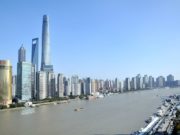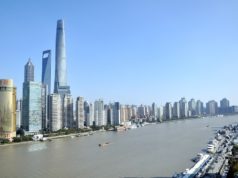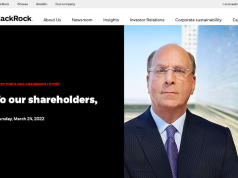Credit Suisse Investment Outlook 2023: GDP to Grow 1.6% in 2023, Inflation at 5%, Bonds are Back, Challenging for Equities, Positive for Active Hedge Funds & Private Equity Co-Investments
7th January 2023 | Hong Kong
Credit Suisse has released the Credit Suisse 2023 Investment Outlook (A Fundamental Reset), providing key insights on the global economy in 2023, investment outlook, key trends in financial markets, asset class forecasts, sector outlook, country outlook, the circular economy and the energy system. In 2023, Credit Suisse forecasts GDP to grow 1.6% (2022: 2.7%) with inflation at 5% (2022: 7.6%) alongside higher unemployment rates. Key Trends in Financial Markets – End to rate hikes as inflation peaks, Growth set to stay low, Fiscal challenges ahead, Globalization dialed back, Fixed income renaissance, Equity markets remain volatile, USD seen staying strong, A good year for most alternative investments, Multi-asset diversification returns. Forecasts for bonds and fixed income to become more attractive as yields have now reached levels that offer some protection against adverse market effects but with volatility in rates due to higher-than-expected inflation. 2023 Bonds & Credit Forecasts: 10-year US Treasury yield 4.1%, Global investment grade bonds 4.6%, Global high yield bonds 5.1%, Emerging market HC bonds 7.6%. It will be challenging for Equities, with nominal economic growth rate to slow substantially, thereby reducing revenue growth potential (1H: Muted equity performance. 2H: Rotate toward interest-rate-sensitive sectors with a growth tilt). 2023 Equities Forecasts: US equities +2%, EMU equities -2%, Swiss equities +5%, UK equities +3% , Japanese equities +1.5%, Emerging market equities +1%. For Real Estate – Listed real estate (Prefer the USA and Switzerland over the Eurozone and UK) and Direct real estate (Rental growth). For Hedge Funds – Active Management such as secondary managers, private yield alternatives and low-beta hedge fund strategies. For Private Markets – Secondaries and private debt, Co-investments (Tailored approach with lower fees, direct investments in an unlisted company together with a private equity fund). For Foreign exchange – USD looks set to remain supported going into 2023. JPY weakness should persist in early 2023, but eventually reverse as the Bank of Japan alters its yield curve control policy. We expect emerging market currencies to remain weak in general. For Commodities – In early 2023, demand for cyclical commodities may be soft. Gold should improve as policy normalization nears its end. Sector Picks – Healthcare, Communication services, Financials, Utilities, IT (Software & services), Sector at Risk – Materials. The Global Energy System – Energy security will continue to dominate government agendas in 2023, Renewable Energy will be the biggest beneficiary. See below for key summary.
“ GDP to Grow 1.6% in 2023, Inflation at 5%, Bonds are Back, Challenging for Equities, Positive for Active Hedge Funds & Private Equity Co-Investments “
Michael Strobaek, Credit Suisse Global Chief Investment Officer: “We expect financial market volatility to remain elevated as risks persist and global financial conditions remain tight. This is likely to create continued headwinds to growth and, by extension, risk assets. To manage this difficult environment, it is key to adhere to robust investment principles, follow a stringent investment process aligned with investors’ long-term financial objectives and seek broad diversification including alternative investments.”
Nannette Hechler-Fayd’herbe, Credit Suisse Chief Investment Officer, EMEA & Head of Global Economics & Research: “We believe the global economy has undergone a fundamental reset in recent years due to the pandemic, shifting demographics and weakening business investment in the wake of geopolitical ruptures and the effects of climate change. The fallout is evident in our longer-term forecasts for the global economy, which we expect will grow at a much slower pace. We expect inflation to remain above central bank targets in 2023 in most major developed economies in 2023.”
Credit Suisse Investment Outlook 2023

Credit Suisse Investment Outlook 2023
Credit Suisse has released the Credit Suisse 2023 Investment Outlook (A Fundamental Reset), providing key insights on the global economy in 2023, investment outlook, key trends in financial markets, asset class forecasts, sector outlook, country outlook, the circular economy and the energy system.
Key Summary – 2023 Investment Outlook
- Global GDP 2023 Forecast – 1.6% (2022: 2.7%)
- 2023 Inflation Forecast – 5% (2022: 7.6%)
- Inflation – Inflation will remain more elevated than in the pre-pandemic years.
- Employment Rate – Higher unemployment rates
- Economic growth – Eurozone and UK to have slipped into recession, China is in a growth recession. Economic growth will generally remain low in 2023 against the backdrop of tight monetary conditions and the ongoing reset of geopolitics
- Inflation and central banks – Inflation is peaking in most countries as a result of decisive monetary policy action. Do not forecast interest-rate cuts by any of the developed market
- Global Economy – New world order, Out with the old monetary regime, Lower-for-longer era ends, Growth outlook dims, Long-term outlook: Lower growth, Challenging environment in 2023 in developed markets, The USD in a divided world
- Key Trends in Financial Markets – End to rate hikes as inflation peaks, Growth set to stay low, Fiscal challenges ahead, Globalization dialed back, Fixed income renaissance, Equity markets remain volatile, USD seen staying strong, A good year for most alternative investments, Multi-asset diversification returns
Key Summary – 2023 Investments / Asset Class
- 2023 Equities Forecasts – US equities +2%, EMU equities -2%, Swiss equities +5%, UK equities +3% , Japanese equities +1.5%, Emerging market equities +1%
- 2023 Bonds & Credit Forecasts – 10-year US Treasury yield 4.1%, Global investment grade bonds 4.6%, Global high yield bonds 5.1%, Emerging market HC bonds 7.6%
- Equities – 2023 as a tale of two halves. 1H: Muted equity performance. 2H: Rotate toward interest-rate-sensitive sectors with a growth tilt. Headwinds for Equities. Expect the nominal economic growth rate to slow substantially, thereby reducing revenue growth potential
- Bonds – Bonds are Back. Yields have now reached levels that offer some protection against adverse market effects
- Fixed income – Fixed income assets should become more attractive to hold. Renewed phase of volatility in rates due to higher-than-expected inflation
- Foreign exchange – USD looks set to remain supported going into 2023. JPY weakness should persist in early 2023, but eventually reverse as the Bank of Japan alters its yield curve control policy. We expect emerging market currencies to remain weak in general.
- Commodities – In early 2023, demand for cyclical commodities may be soft. Gold should improve as policy normalization nears its end
- Real Estate – Listed real estate: Prefer the USA and Switzerland over the Eurozone and UK. Direct real estate: Focus on rental growth
- Hedge Funds – Active Management such as secondary managers, private yield alternatives and low-beta hedge fund strategies
- Private Markets – Secondaries and private debt, Co-investments: Tailored approach with lower fees. Co-investments such as direct investments in an unlisted company together with a private equity fund.
- Sector Picks – Healthcare, Communication services, Financials, Utilities, IT (Software & services)
- Sector at Risk – Materials
- The Global Energy System – Energy security will continue to dominate government agendas in 2023, Renewable Energy will be the biggest beneficiary
1) Credit Suisse Investment Outlook 2023
- Global GDP 2023 Forecast – 1.6% (2022: 2.7%)
- 2023 Inflation Forecast – 5% (2022: 7.6%)
- Inflation – Inflation will remain more elevated than in the pre-pandemic years.
- Employment Rate – Higher unemployment rates
- Economic growth – Eurozone and UK to have slipped into recession, China is in a growth recession. Economic growth will generally remain low in 2023 against the backdrop of tight monetary conditions and the ongoing reset of geopolitics
- Inflation and central banks – Inflation is peaking in most countries as a result of decisive monetary policy action. Do not forecast interest-rate cuts by any of the developed market
- Fixed income – Fixed income assets should become more attractive to hold. Renewed phase of volatility in rates due to higher-than-expected inflation
- Equities – 2023 as a tale of two halves. 1H: Muted equity performance. 2H: Rotate toward interest-rate-sensitive sectors with a growth tilt
- Foreign exchange – USD looks set to remain supported going into 2023. JPY weakness should persist in early 2023, but eventually reverse as the Bank of Japan alters its yield curve control policy. We expect emerging market currencies to remain weak in general.
- Commodities – In early 2023, demand for cyclical commodities may be soft. Gold should improve as policy normalization nears its end
- Real estate – Environment for real estate to become more challenging in 2023. Favor listed over direct real estate due to more favorable valuation. Prefer property sectors with strong secular demand drivers such as logistics real estate.
- Private markets & hedge funds – Active Management such as secondary managers, private yield alternatives and low-beta hedge fund strategies. Co-investments such as direct investments in an unlisted company together with a private equity fund
Global Economy
- New world order
- Out with the old monetary regime
- Lower-for-longer era ends
- Growth outlook dims
- Long-term outlook: Lower growth
- Challenging environment in 2023 in developed markets
- The USD in a divided world
2) Region Outlook on Economy
- United States – A close call
- Eurozone – Energy crisis dominates
- Latin America – Tougher times ahead
- Gulf Cooperation Council (GCC) – Beneficiaries of geopolitical fractures
- United Kingdom – Credibility in question
- Switzerland – Consumption is holding up
- Australia – Growth to decelerate
- China – Modest recovery in 2023. Pivot hopes unfounded
- Japan – Creeping toward a policy shift. A divided world could help resuscitate the yen
- Southeast Asia – Better positioned in a slowing world
3) Key Trends in Financial Markets
- End to rate hikes as inflation peaks – Central banks will stop hiking rates in Q1/Q2 2023. Do not expect rate cuts in 2023 because inflation will remain above central bank targets.
- Growth set to stay low
- Fiscal challenges ahead – Public support measures means deficits will stay high. Governments are likely to increase taxes to finance spending.
- Globalization dialed back – World becomes more multipolar. Global trade as a share of GDP to decline
- The fixed income renaissance – Bond yields reset at higher levels, inflation peaks, and central banks stop rate hikes, fixed income returns look more attractive. Emerging market hard currency sovereign bonds, US government bonds, investment grade corporate bonds and selected yield curve steepening strategies look particularly interesting
- Equity markets remain volatile – Prefer defensive sectors, regions and strategies with stable earnings, low leverage and pricing power, such as Swiss equities, healthcare and quality stocks. Defensive Super- trends such as Silver economy, Infrastructure and Climate change should also prove less volatile.
- USD seen staying strong – The USD should be supported by its interest rate advantage for most of 2023. Developed market currencies such as the JPY are now undervalued and could stage a turnaround and appreciate at some point.
- A good year for most alternative investments – Hedge funds should deliver above-average returns, and 2023 is also likely to be a good vintage year for private equity. Secondaries and private debt should do well. In real estate, we prefer listed over direct solutions.
- Multi-asset diversification returns – Bond yields have reset at higher levels, fixed income as an asset class has gained relative attractiveness compared to equities. Diversification benefits should return.
4) Financial Market 2023 Forecasts
Equities
- US equities: +2%
- EMU equities: -2%
- Swiss equities: +5%
- UK equities: +3%
- Japanese equities: +1.5%
- Emerging market equities: +1%
Bonds
- 10-year US Treasury yield – 4.1%
- 10-year German Bund yield – 2.8%
- 10-year Swiss Eidgenossen yield – 1.4%
Credit
- Global investment grade bonds – 4.6%
- Global high yield bonds – 5.1%
- Emerging market HC bonds – 7.6%
Currencies & commodities
- EUR/USD – 1.02
- USD/CHF – 0.95
- EUR/CHF – 0.97
- USD/JPY – 135
- GBP/USD – 1.14
- USD/CNY – 7.3
- Gold (USD/oz) – $1750
- WTI (USD/bbl) – $80
5) Main Asset Classes
Bonds are Back
- Yields have now reached levels that offer some protection against adverse market effects
- We may not have reached the peak in bond yields yet, for example if a potentially more pronounced reduction of central banks’ balance sheets should occur
- Bond market volatility is likely to remain elevated in the near term.
- Adding bonds to a portfolio will evolve throughout 2023
- At the beginning of the year, adding duration is unlikely to be outright attractive for most currencies, with the USD being an exception
- Emerging market hard currency bonds already offer an attractive return outlook as yields have reached levels that are rare in a historical context and compensate handsomely for the investment risk
- Corporate credit from investment grade-quality issuers will likely become attractive once central banks signal a slowing of the tightening cycle
- For high yield corporate credit, we maintain a more cautious view
Headwinds for Equities
- Challenging for equity markets, as we expect the nominal economic growth rate to slow substantially, thereby reducing revenue growth potential
- Close to record-high corporate profit margins will likely come under pressure and start to reflect various cost pressures, including the energy price shock, higher wages and more expensive financing costs
- Defensive equity strategies, and we favor companies that can defend profit margins by passing on higher costs and which operate in fields with high barriers to entry
- Once the interest rate environment starts to stabilize and uncertainty clears, however, we think it will be time to shift into quality growth companies
- Investors can build more robust portfolios by complementing these more traditional asset classes with non-traditional ones
- Certain hedge fund strategies, which can thus help to navigate this difficult investment backdrop
- Investors who can accept limited liquidity in investments, private markets that encompass both private equity and debt investments should help to enhance return profiles
Bonds vs. equities in 2023
- Higher inflation and rising interest rates should translate into lower prices for equities and bonds. This is because future cash flows are discounted at a higher rate
- Growth shocks should primarily affect equities, via a depressed earnings growth outlook and lower expected dividends
- Bonds, on the contrary, may benefit from such a scenario as yields fall on the back of lower inflation expectations and ultimately looser monetary policy.
- Rising real yields would prevent bond prices from rallying at a time when equities come under further pressure, limiting their diversification benefits and keeping the bonds-equities correlation at elevated levels.
6) 2023 Sector Outlook
- Healthcare – Defensiveness at a reasonable price. Healthcare equipment is expected to drive growth in 2023, while pharmaceuticals should provide a cushion for valuation
- Energy – More challenging 2023 ahead. Exploration & production stocks will likely be the most vulnerable, followed by integrated oil & gas companies. Equipment and services should fare better as capital expenditures will likely remain resilient.
- Communication services – Opportunities to emerge once rates peak. Media & entertainment has the highest growth potential, in our view, while telecom stocks are cheap with an attractive dividend yield.
- Consumer discretionary – High-end consumer preferred. Expect the more cyclical elements of the sector to come under pressure in H1 2023 as global demand weakens
- Consumer staples – Earnings resilience, but yields are a risk. The consumer staples sector offers high-quality companies with low earnings volatility and margin resilience.
- Financials – Net interest income to drive earnings amid recession risks. Barring a significant downturn, we expect the sector to do well in 2023.
Industrials – Recession risks loom large. Industrials is one of the sectors that is most sensitive to economic activity - Utilities – Regulation and renewables in focus. Earnings are expected to be resilient, but valuation is expensive going into 2023. We expect the focus to turn increasingly to regulation risks and also the ongoing transition to renewables as energy disruption risks persist
- Information technology – Earnings back in focus. Software & services offers the most earnings stability given its high share of recurring revenues
- Materials – Earnings at risk. Expected to face the sharpest earnings contraction in 2023
- Equity styles – Quality in focus amid uncertainty. Prudent to go for minimum volatility and to some extent dividend styles
7) Regional Outlook on Investments
- United States – Solid earnings picture, but relatively elevated valuation
- Eurozone – Geopolitical and growth risks cloud the outlook
- United Kingdom – Favorable valuation, lackluster growth
- Switzerland – Defensive characteristics attractive amid uncertainty
- Japan – Currency is the key
- Asia – Recovery remains elusive
- Eastern Europe, Middle East and Africa – Clear bright spot within the region
- Latin America – Geographical isolation as a positive
9) Technical Views
- China – Further weakness ahead for Chinese equity markets
- United States – US inflation expectations to move lower during 2023
- Currencies – Monetary policy, growth likely to drive FX. JPY depreciation likely to turn in time, EM hampered by lower carry, growth risks, CNY weakness should persist.
- Real Estate – Stay selective. Listed real estate: Prefer the USA and Switzerland over the Eurozone and UK. Direct real estate: Focus on rental growth
- Hedge Funds – Improving return prospects. Strategies benefiting from rising rates and inflation
Private Markets – Secondaries and private debt, Co-investments: Tailored approach with lower fees.
Commodities – Accelerating the transition. Backdrop for gold set to improve, Energy transition set to accelerate, Carbon price dips present long-term opportunity - Diversify – Supertrends to diversify your risks. Defensive: Silver economy, Infrastructure, Climate change. Growth: Millennials’ values & Technology. Anxious Societies: Personal security, Employment. Affordability: Energy and Food
- Circular Economy – Green raw materials, Cleaner design/ production, Better service, Re-use/ repair, Recycle
10) The Global Energy System
- Energy security will continue to dominate government agendas in 2023
- Renewable Energy will be the biggest beneficiary
- Geopolitics is not the only catalyst for this transition; Threat of climate change
- Dependence on fossil fuels has often been at the root of geopolitical instabilities
- Looking to 2023, persistently high energy prices would increase the risk of a global recession.
- Expanding liquefied natural gas (LNG) capacity may struggle to solve all energy security concerns
- Overextending gas capacity is not consistent with climate goals, as gas is associated with substantial emissions
- Climate commitments of developed nations will make the share of gas-fired power increasingly marginal
- Growing economic and security benefits of electrification will also contribute to displacing gas
- Investments in new gas infrastructure could eventually be subject to devaluation over the long term
- Renewables deliver sustainable, readily available, domestic and economically competitive energy generation
- Yield of existing renewables to improve over their lifetime, as storage solutions such as grid-scale batteries become more common
- To meet the Paris Agreement, cumulative wind and solar capacity needs to grow
- Nuclear power has a role to play. While several factors are slowing its rollout, nuclear energy has the potential to complement the production of low-carbon electricity where renewable resources are limited.
- Floating wind technologies makes it possible to explore new markets and geographies where bottom-fixed foundations are impractical
- Offshore wind offers a remarkable capacity factor, potentially more than 50%, which would be more than twice that of other sources such as solar.
- Offshore wind is already economically competitive. Exponential growth in the future
- Solar photovoltaic (PV) is forecast to lead global renewable capacity
- Solar projects will be increasingly paired with battery storage in the future, as the technology evolves and costs decline
Credit Suisse
Credit Suisse is one of the world’s leading financial services providers. The bank’s strategy builds on its core strengths: its position as a leading wealth manager, its specialist investment banking and asset management capabilities and its strong presence in its home market of Switzerland. Credit Suisse seeks to follow a balanced approach to wealth management, aiming to capitalize on both the large pool of wealth within mature markets as well as the significant growth in wealth in Asia Pacific and other emerging markets, while also serving key developed markets with an emphasis on Switzerland. The bank employs more than 50,000 people. The registered shares (CSGN) of Credit Suisse Group AG, are listed in Switzerland and, in the form of American Depositary Shares (CS), in New York. Further information about Credit Suisse can be found at www.credit-suisse.com.
Sign Up / Register
Caproasia Users
- Manage $20 million to $3 billion of assets
- Invest $3 million to $300 million
- Advise institutions, billionaires, UHNWs & HNWs
Caproasia Platforms | 11,000 Investors & Advisors
- Caproasia.com
- Caproasia Access
- Caproasia Events
- The Financial Centre | Find Services
- Membership
- Family Office Circle
- Professional Investor Circle
- Investor Relations Network
Monthly Roundtable & Networking
Family Office Programs
The 2025 Investment Day
- March - Hong Kong
- March - Singapore
- July - Hong Kong
- July - Singapore
- Sept- Hong Kong
- Sept - Singapore
- Oct- Hong Kong
- Nov - Singapore
- Visit: The Investment Day | Register: Click here
Caproasia Summits
- The Institutional Investor Summit
- The Investment / Alternatives Summit
- The Private Wealth Summit
- The Family Office Summit
- The CEO & Entrepreneur Summit
- The Capital Markets Summit
- The ESG / Sustainable Investment Summit



































